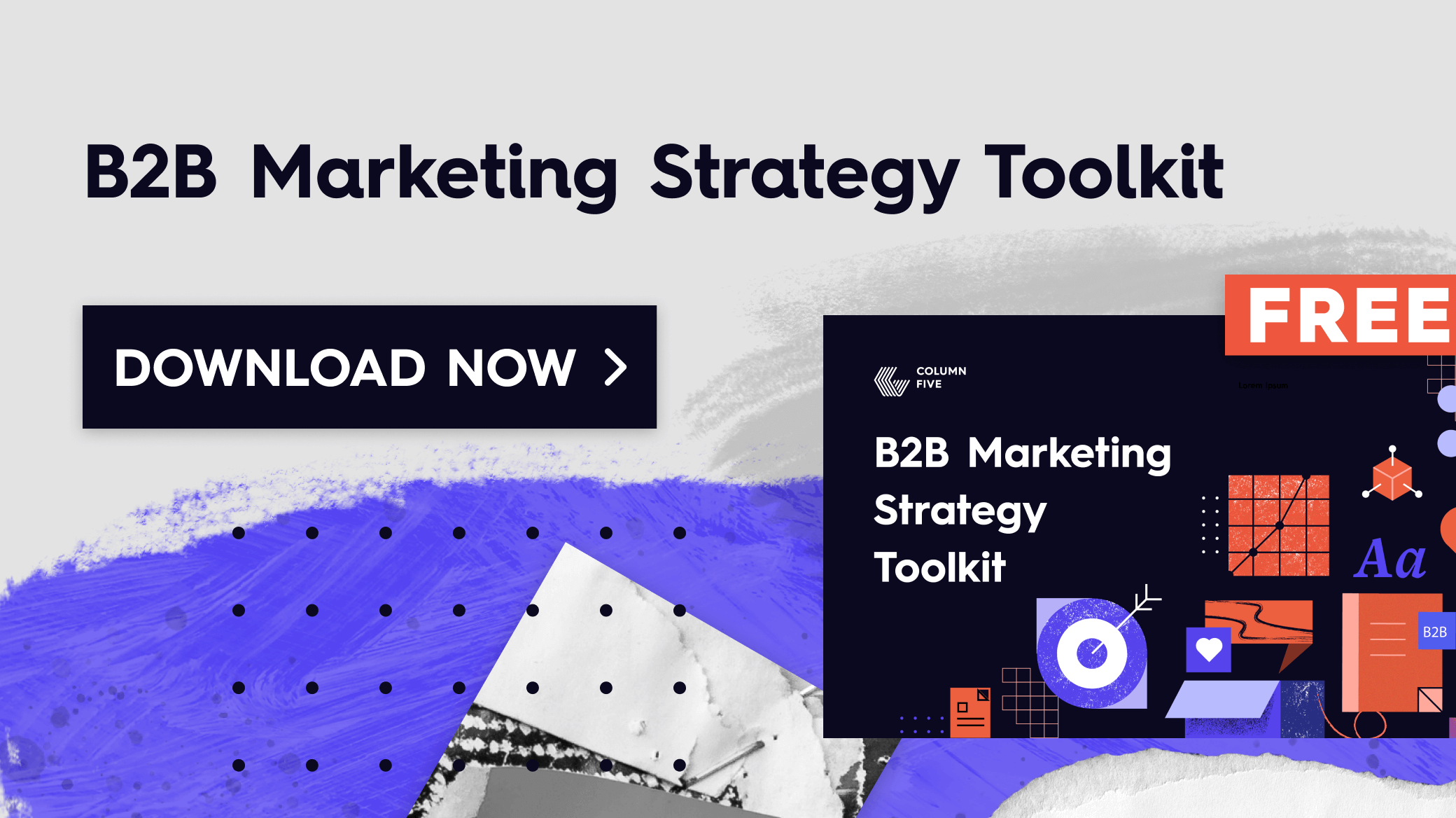Sales enablement content is one of the best ways to improve your ROI. It improves efficiency, shortens sales cycles, increases win rates, reduces costs, and allows for data-driven decision-making. But what type of sales enablement should you create?

5 Types of Sales Enablement Content You Need
When people think of sales enablement content, they often think of pitch decks or product brochures. But sales enablement can encompass so many more types of content that can empower your sales team to close deals with less effort—and better results. The most important thing to consider is how and where your team needs support. If you’re not sure what that can look like, here’s an expansive list of content you might make.
1) Sales Collateral
Good sales collateral educates and eases conversations, making it easier to close deals faster.
- Product Collateral: Think about brochures, product guides, and spec sheets that provide detailed info about your products/services—and reinforce your value proposition.
- Case Studies: Case studies showcase real-world examples of how your products or services have helped customers solve specific problems or achieve their goals. Pro tip: Look at what your competition is doing in their case studies. For example, our case studies traditionally focused on visuals, but we noticed our competitors were leading with more results-based stories. Now, we aim to put results front-and-center when we can. But no matter what approach you take, it’s important to build a strong narrative for your customer success stories.
- Decks and Presentations: This type of content is ideal to guide the conversation and explain processes, products, or other relevant information. Pro tip: It’s especially helpful to templatize your decks. We used to struggle to create personalized and well-designed decks (specifically because it’s a time-consuming task that conflicts with time-sensitive pitches). To solve this, we transferred our entire collateral system from Google Slides to Figma, leveraging the auto layouts feature to make it foolproof. This allows our team to make edits quicker while creating a clean, on-brand design.
- Whitepapers and Ebooks: These longer-form pieces are super helpful to position your brand as a thought leader, particularly if you dive deep into industry trends, challenges, and solutions. Pro tip: You can also break these pieces down into additional pieces of content, helping to maximize your output. (Find out more about how to create a divisible content strategy.)
- Blog Posts: It’s always great to showcase a variety of expert voices, and blog posts or simple Q&As can spotlight the experts on your team. You might share industry news, tips, best practices, or lessons learned. All of these are a great way to educate people and answer questions they didn’t even know they had.
- Email Templates: Personalized email templates are another great tool to help sales reps quickly and effectively communicate with prospects. Pro tip: AI is especially helpful for creating email templates. Find out more about which AI tools to use, and follow our tips to master your email outreach.
- Social Media Posts: Sales enablement content for social media can include both written and visual content that is informative, engaging, and tailored to the platform and audience. Pro tip: Microcontent is a great way to share your thoughts and perspective. See our guide to find out how to put it to use.
- Video Content: Video content is a fantastic tool to explain concepts, demonstrate products, provide tutorials, or share customer testimonials. Pro tip: Explainer videos are one of the most common sales enablement tools, but not all are equal. Find out about the keys to good explainer videos, and see our roundup of inspiring pieces.
Note: You should also audit your most high-value content (the content that converts the most) and look for ways to expand or repeat it. For example, our marketing team tracks the most valuable resources on our CMS backend, and sales does the same in their interviews.
We noticed that customers often start their journey via a referral or social clickthrough, then dive into our free resources or case studies (which they’ll even return to for a year or more!). Once they make it to a sales call, they’ll often mention those resources, which shows how much of an impact they have. Knowing these pieces are so valuable to our entire marketing and sales pipeline, we have monthly meetings to brainstorm and build out those resources/case studies. This not only feeds our existing community but creates new entry points for more prospective customers.
2) Sales Training and Coaching Content
To be the best sales team, you need to practice, prepare, and share helpful insights with each other. If you can create content to help your team do this more effectively (or even cater to different learning styles), you will build a happier and more supported team.
- Playbooks: Think about creating step-by-step guides and best practices for different sales scenarios. You can also employ these in coaching sessions to improve certain skills and techniques.
- Onboarding Programs: Getting new hires up to speed quickly and efficiently is so important. Think of efficient ways to do this, whether it’s a video series, welcome packets, playbooks (as previously mentioned), or other onboarding tools.
- Ongoing Training: Learning is never done, as there are always ways to improve. Think of things like workshops, webinars, or e-learning modules to keep your team connected and growing.
Pro tip: Interactive elements like quizzes or gamified learning modules can be a particularly fun and engaging way to help your team.
3) Technology and Tools Content
Technology can do a lot to support sales enablement, but using and implementing that tech can be tedious. Educational content around these tools can go a long way to improve efficiency.
- CRM & Sales Enablement Platforms: Tools that help you manage customer interactions and centralize sales content and analytics are crucial, so create guides and tutorials to make it easier, and share tips for leveraging data and analytics to improve sales performance.
- Communication Tools: Consider implementing tools like chatbots, which can help you streamline communication with your prospects. (Again, AI tools are a great way to implement these features.)
Pro tip: Find out how AI can help you hack marketing and sales in more ways than you might expect.
4) Data and Analytics Reporting
Translating your data into easy-to-digest content that you can extract insights from is a great help for sales enablement.
- Sales Metrics and KPIs: Produce regular reports that track performance indicators like conversion rates, sales cycle length, and average deal size. Sharing this info with the team helps you get a big-picture understanding of how you’re doing—and can give you insights on weak spots you may need to nurture.
- Customer Insights: Data on customer behavior, preferences, and pain points can help you better tailor your sales approaches. Pro tip: Turn these customer insights into personas that clearly segment your audience. These can help you better understand people’s emotional drivers and optimize all your content, from home page copy to sales brochures, to speak to their wants and needs.
- Predictive Analytics: Use data to forecast sales trends and identify high-potential leads.
In addition to reporting, identify more ways to streamline your sales workflows to reduce friction and increase efficiency. Pro tip: Make sure you have built a clear buyer journey to identify weak points that can be improved via content, education, or interaction. Pay special attention to the hand-off points between marketing and sales. (This is where many things fall through the cracks—and both teams end up blaming each other.)
5) Team Collaboration Content
Beyond training and tutorials, internal content can be a powerful force to keep your team connected and collaborating on ways to better serve your customers—and each other.
- Company News and Updates: Simple newsletters or roundups on the latest company initiatives, product/service developments, or helpful tips/insights can help keep everyone in the loop.
- Success Stories and Recognition: Celebrating top performers is a great way to create a positive and uplifting culture. Pro tip: You can also use this culture content for content marketing across social media, helping spotlight your employees and humanize your brand.
Also, make sure everyone has access to the tools they need via a centralized content repository that acts as a single source of truth for all sales materials. (Assign a point person tasked with maintaining and updating that repository.)
Most importantly, however, always look for new ways to foster collaboration between marketing and sales.
How to Build Bridges Between Marketing and Sales
Establish feedback loops, hold regular brainstorms, and share learnings between your departments. These regular conversations can help you tap into more creativity and create even more useful content to help both marketing and sales.
Of course, we know brainstorming content is one thing; creating it is another.
If you need more inspiration to bring your teams together and make the best content possible, see our best practices for sales enablement and follow these tips to bridge sales and marketing. And if you need a partner to help you revamp your sales content, feel free to reach out to us. Whether you need content support or a fully rebuilt content strategy, we’d be happy to help you create the tools you need to close the deal.
Above all, remember that it doesn’t matter what form your sales enablement content takes as long as it serves its purpose: to support your team.





